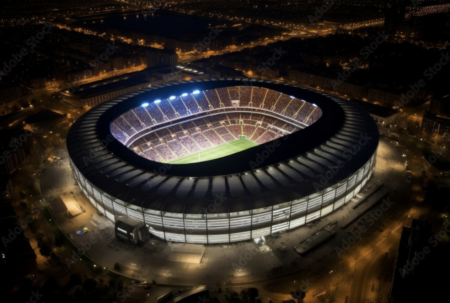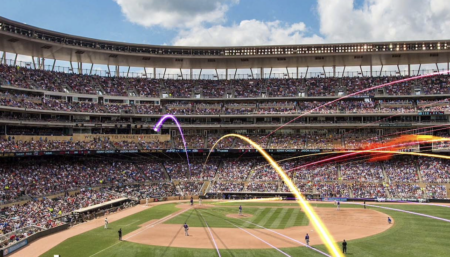As part of Stadia’s ongoing series of web-exclusive interviews with parties involved in the Mercedes-Benz Stadium project, Mike Compitello talks about how IBM became involved with the new stadium, and some of the technical goals that had to be achieved.
How did the Mercedes-Benz Stadium (MBS) project come about? Did you pitch for it, or did AMB Sports & Entertainment (AMBSE) reach out to IBM for its expertise?
We met AMBSE in one of the bidder’s meetings and because of our work with Texas A&M and others, they asked us to provide a similar proposal.
What were the key aspects of the project that the stadium clients were keen to stress to you? What was their vision for the venue’s fan experience?
They wanted to ensure that this was truly a converged network, not separate networks for each stadium system. They also wanted an integration process that would ensure each technology was tested and validated for the passive optical network.
From a fan experience perspective, they wanted to make sure every possible fan persona was taken into account to create a frictionless experience that would be realized through the features made possible in the app that we developed.
When did work on the project begin, and can you talk us through the timeline of design, installation and testing etc?
IBM began about a year after construction drawings and designs were in process. We incorporated our technology designs into the main construction drawings at that time, and over the next eight months developed a detailed design followed by a six-to-eight-month process of testing in a lab environment of every piece of technology that would be connected to the fiber network.
Will IBM continue to be involved in the project even after opening?
IBM will be providing services after opening in monitoring and management of the Data Center and DAS equipment.
Which aspect of IBM’s work on the stadium are you particularly proud of/impressed by?
The integration of virtually every operational and business system on to the super highway made up of fiber.
Were there many obstacles on this project, and how were these overcome?
There are always complexities and hurdles in a project of this size. The importance of daily communication and close relationship with the general contractor, the architect and engineering resources are critical to working together as a team.
Is MBS now a benchmark for the integrated and interconnected stadium that other venues will aspire to?
We are confident that MBS will be a great example and inspiration for other venues that are interested in making sure their fan experience is driven by the right technology that is fit for purpose through a deliberate design.
September 13, 2017




